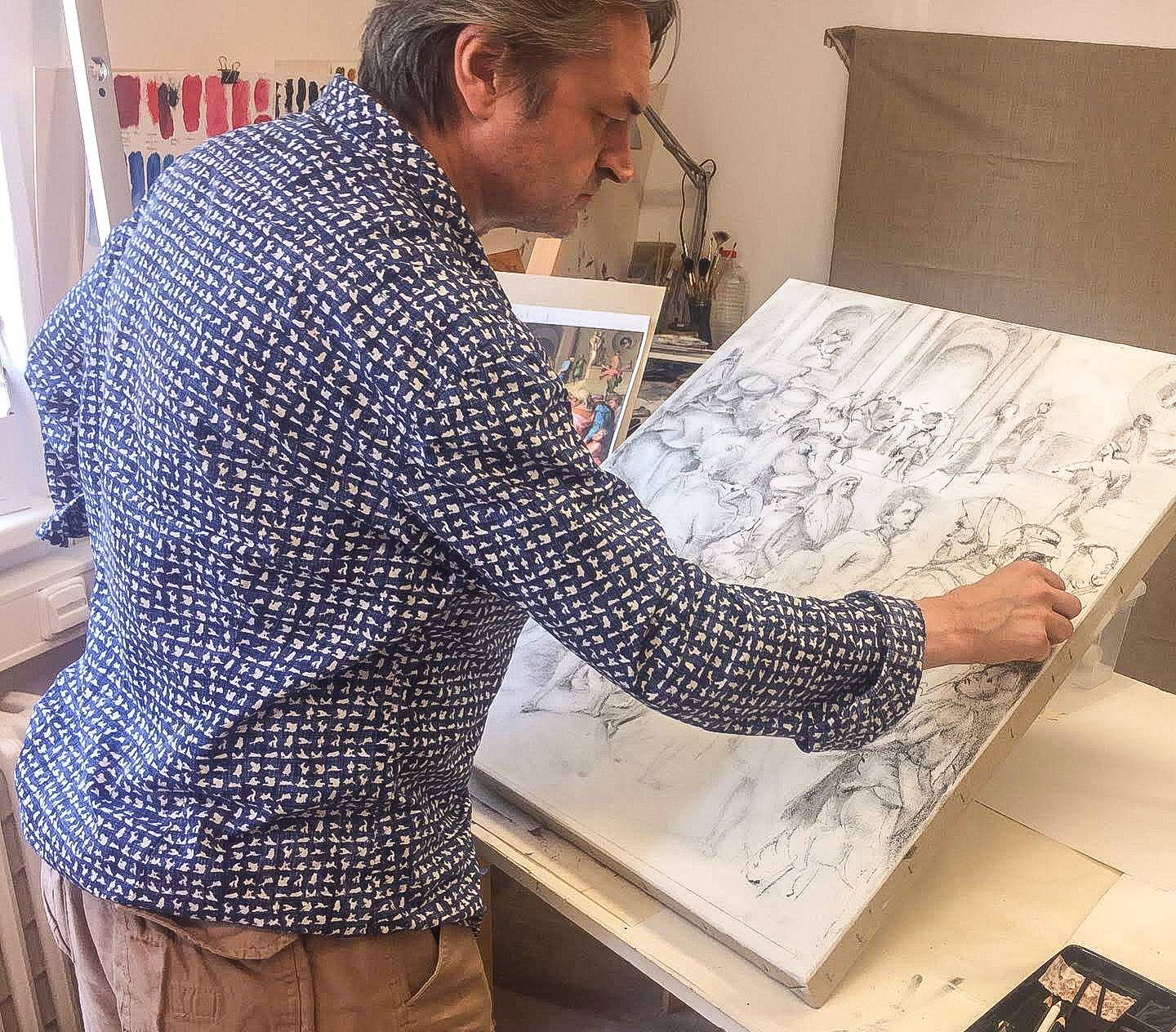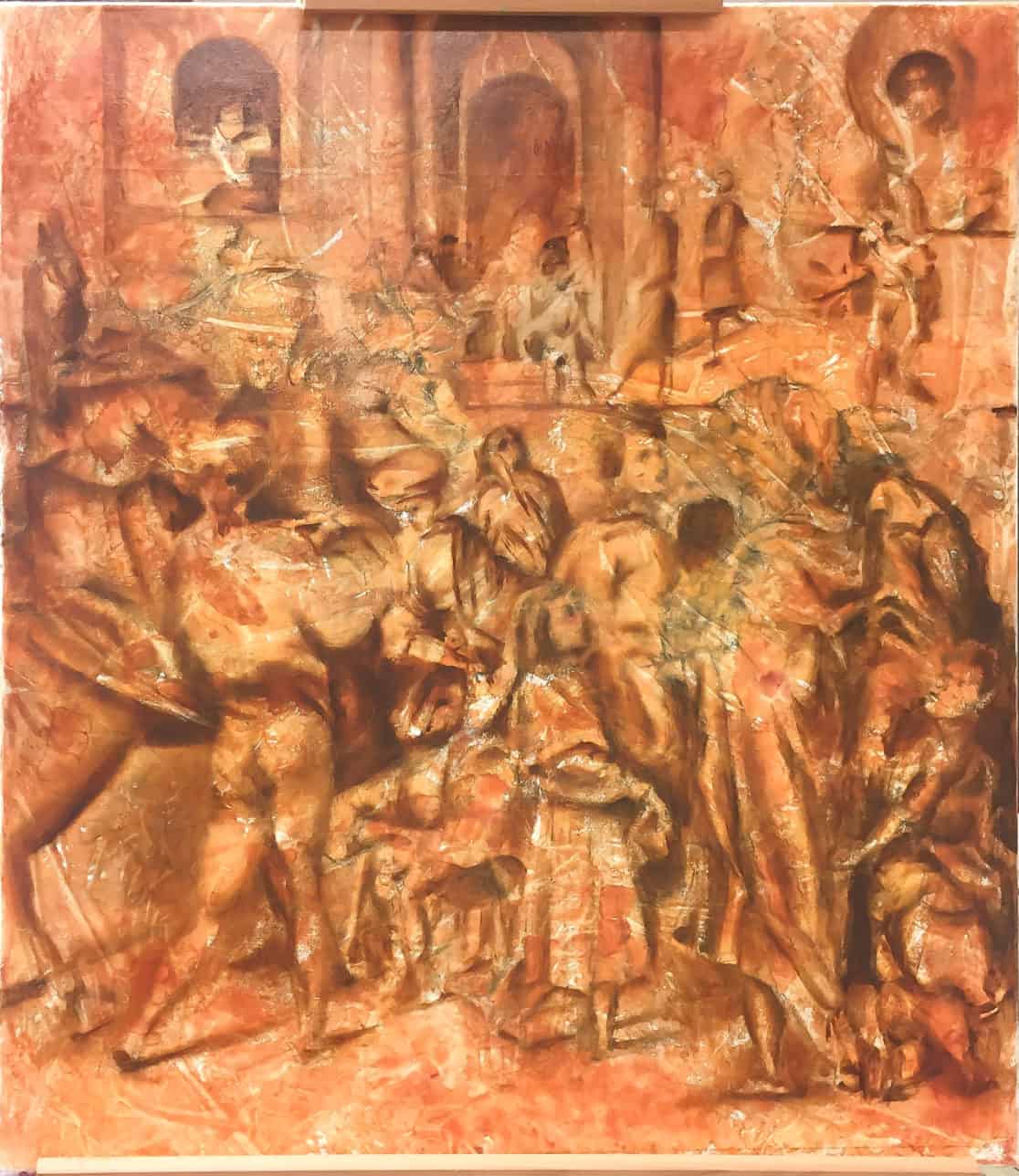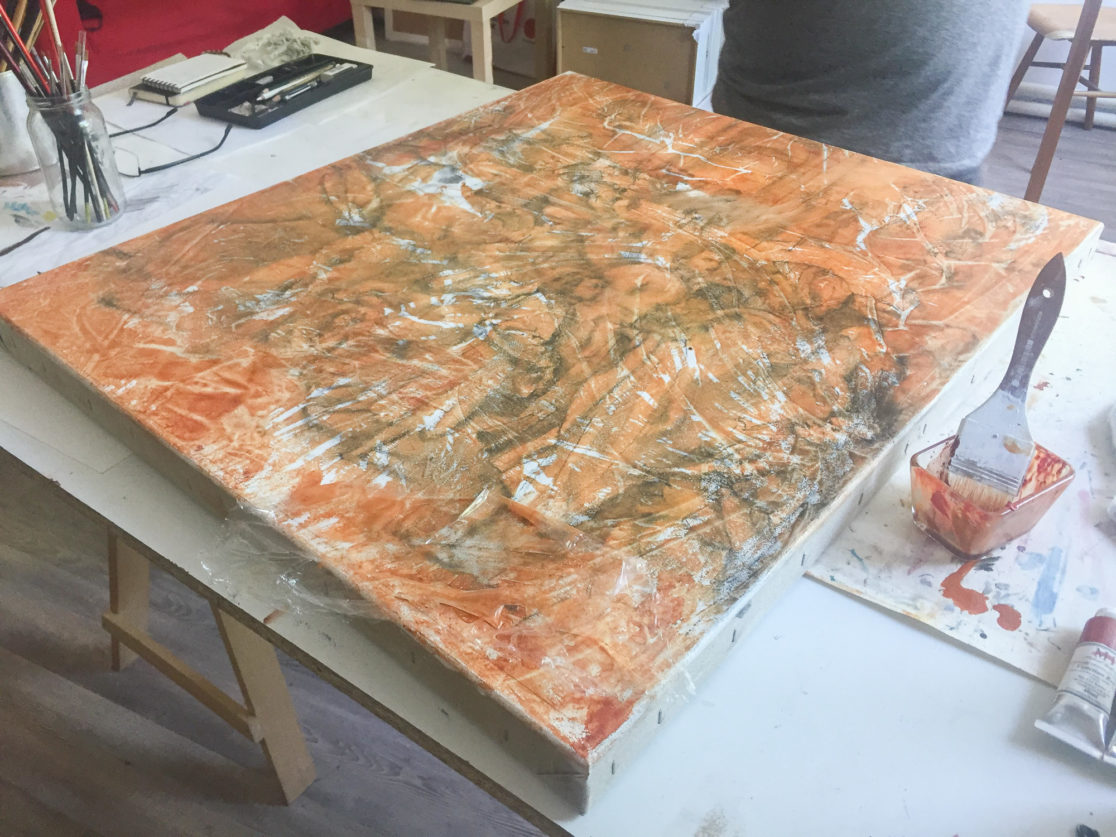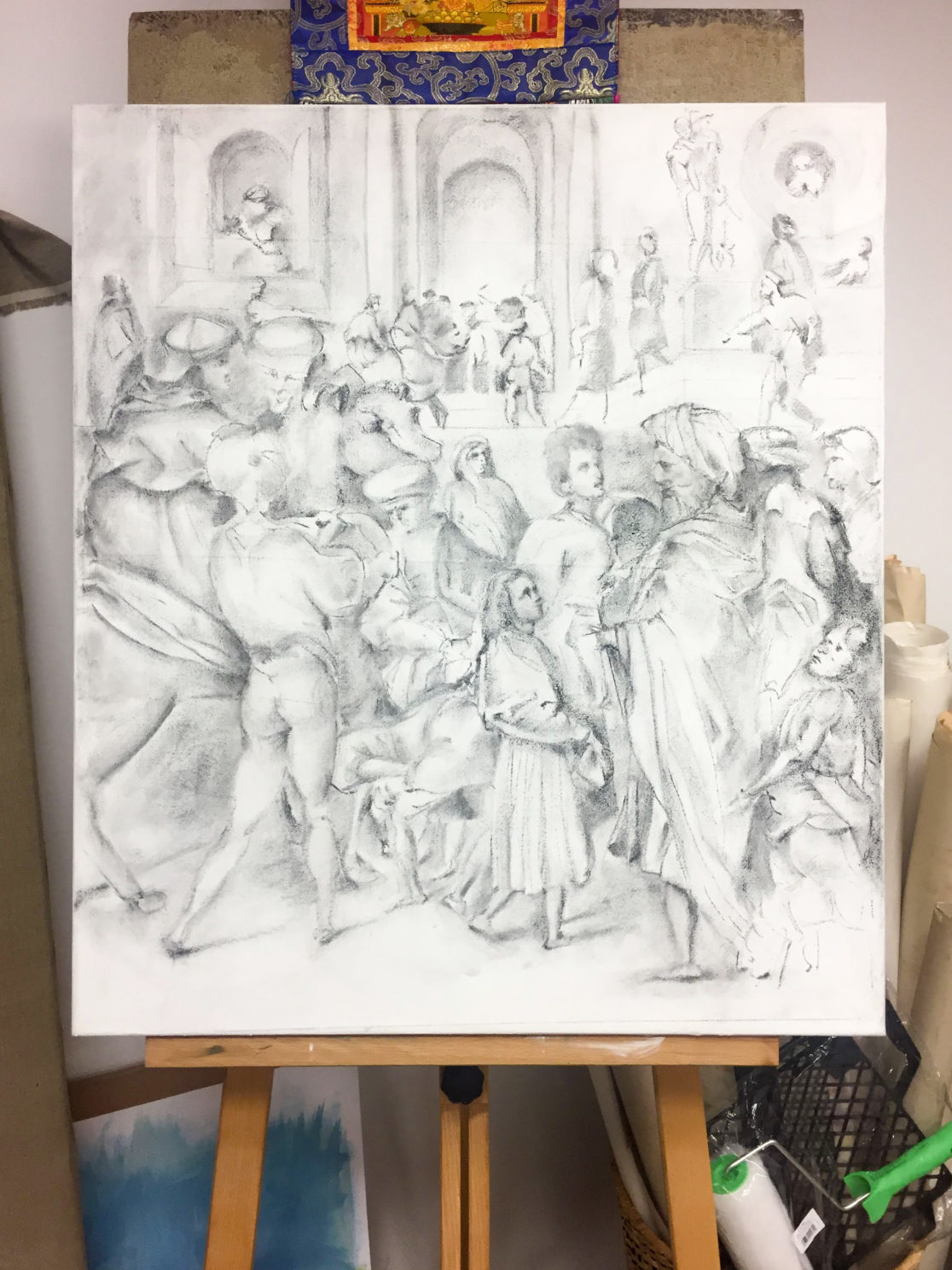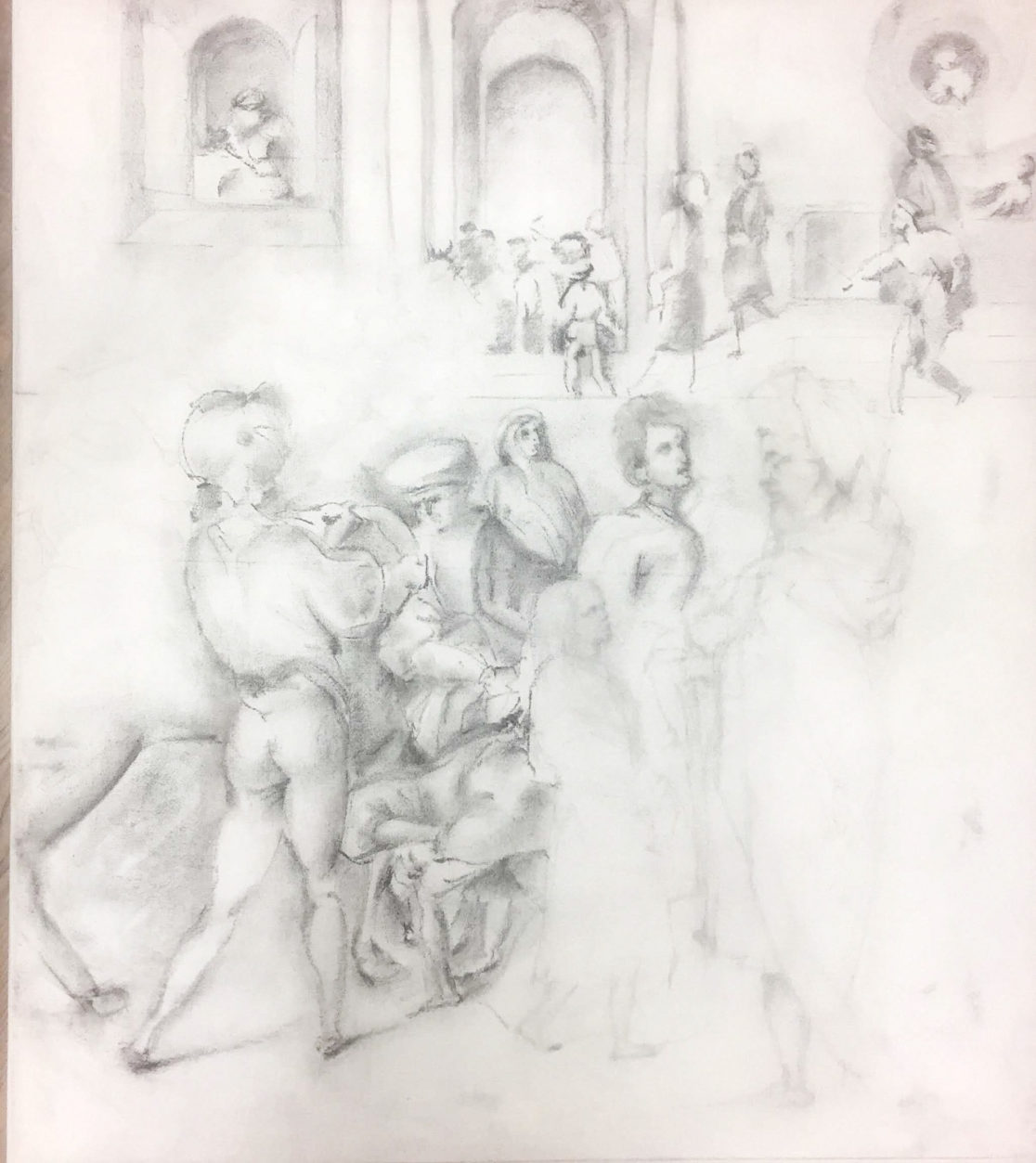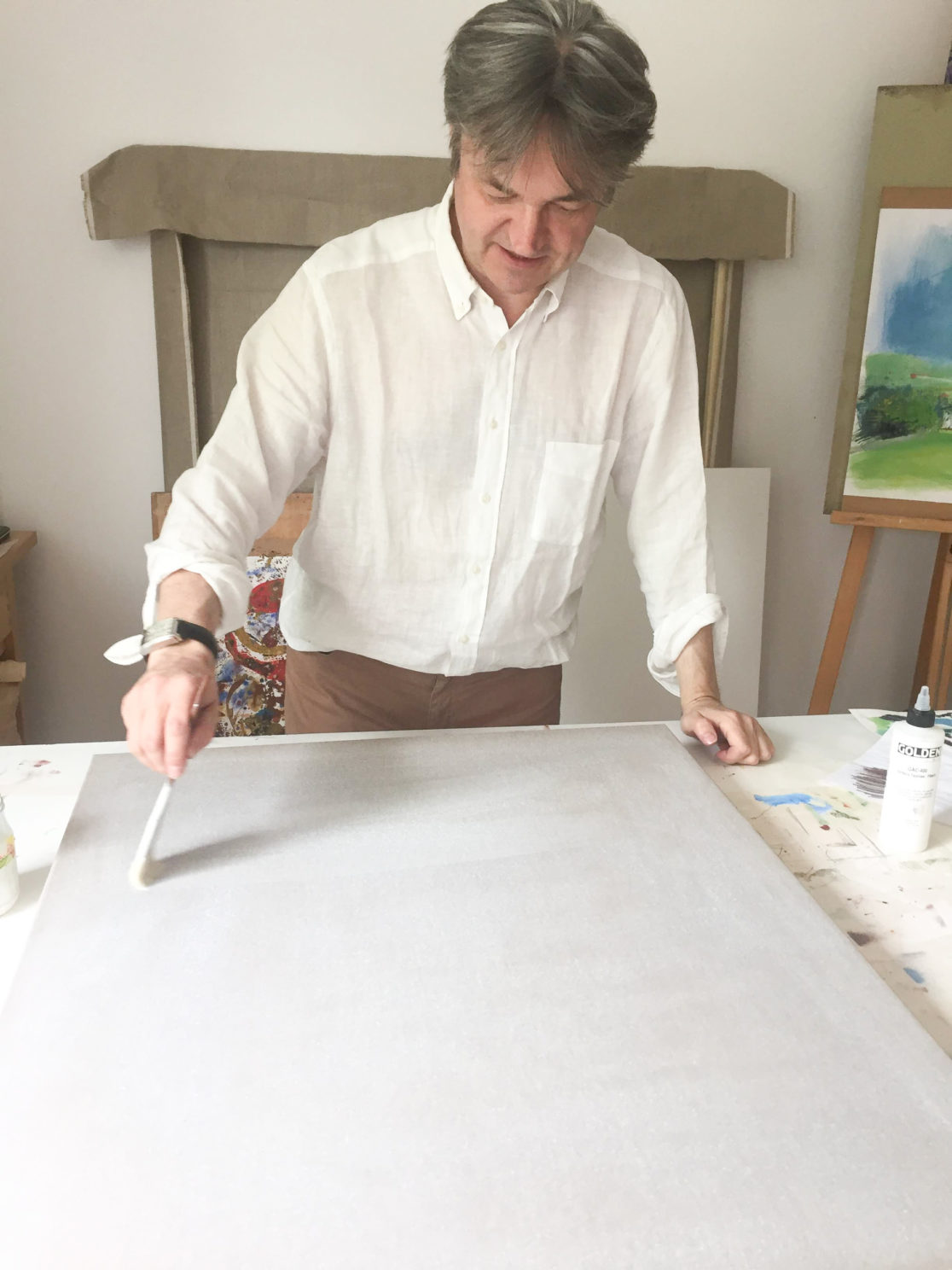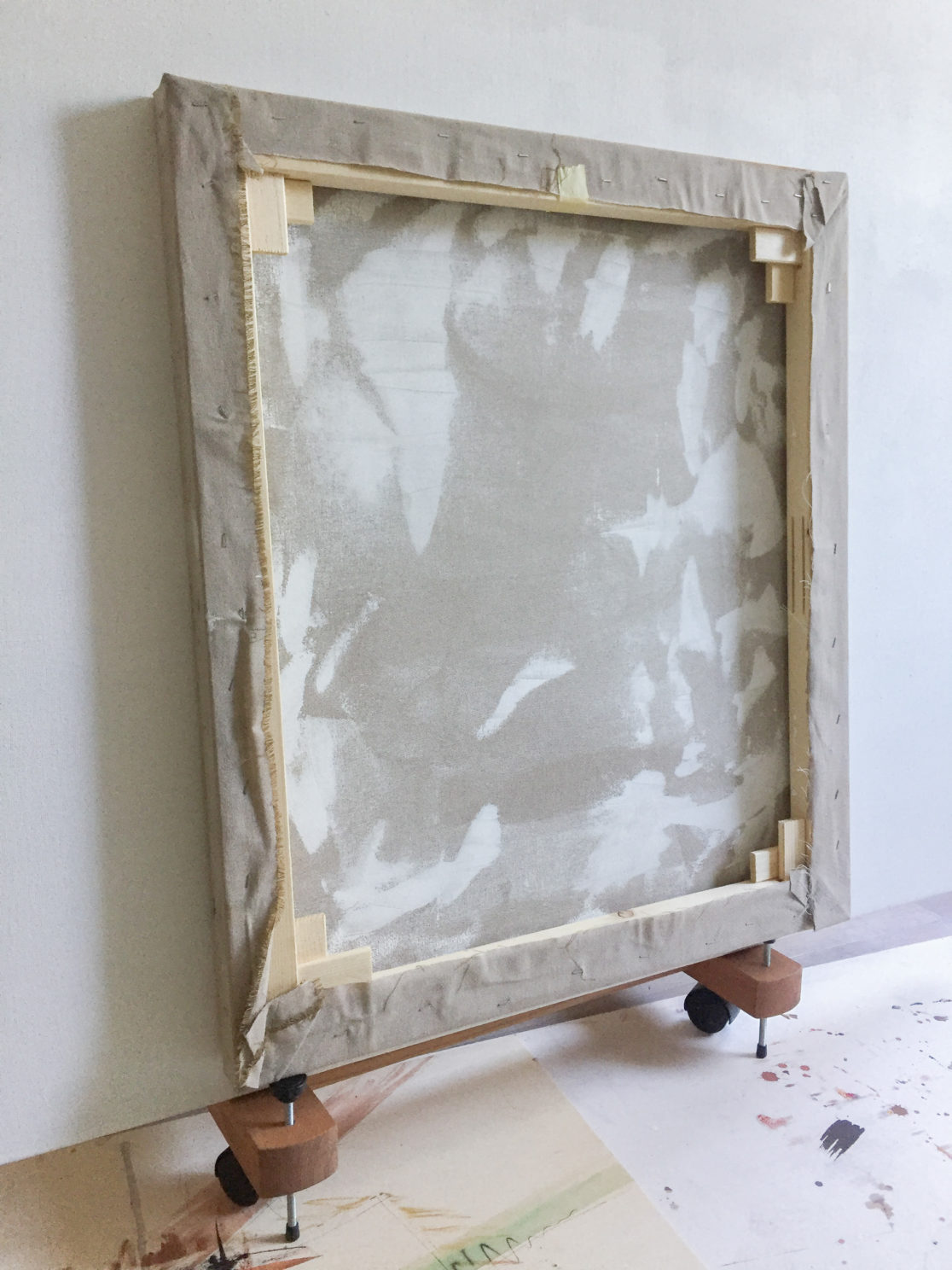Pontormo, Josef a Potifar
igor david canvas 70/80cm 2020
The process of making
1. ground
A stable and durable substrate is the basis of every image. Sturdy, light frame, quality canvas. In this case, we used polyester restoration quality canvas and acrylic sheps. This combination retains a certain degree of flexibility, so there is no risk of cracking future layers of painting.
2. drawing
Careful drawing of the whole theme was an important element for Renaissance painters. It formed the skeleton of the future work and was copied into the subsequent layers of the painting.
3. imprimiture
The imprimiture was used to fix the angular drawing and was the unifying color of the background of the image. It was mostly warm, light, red-ocher-red in color.
Media
The key material in every Renaissance painting workshop was a medium that they often mixed into colors. This medium accelerated the solidification of the paint and thus shortened the drying time of the individual layers. The Renaissance painting was built from several layers and the drying time was a key factor for the painter in the technology of work. Various resins mixed with linseed oil were often used as the medium.
4. darkest strokes
The first of the lower layers of the painting is this dark brown layer, which the painter emphasizes the darkest places.
5. distribution of lights
Underpainting the lightest areas and significant solid areas of color is the next step in building an image. The white underpainting serves as a basis for distinctive top color layers and, especially in the future, will retain the color of the image. The reason is the transparency of the oil paint, and without this white bottom layer, the image would darken in the future.
předloha:
- Josef je prodán Potifarovi
- Jacopo da Pontormo
- 50/60cm
- 1528
- National Gallery London
